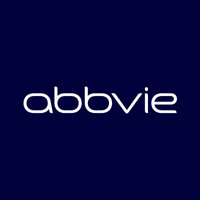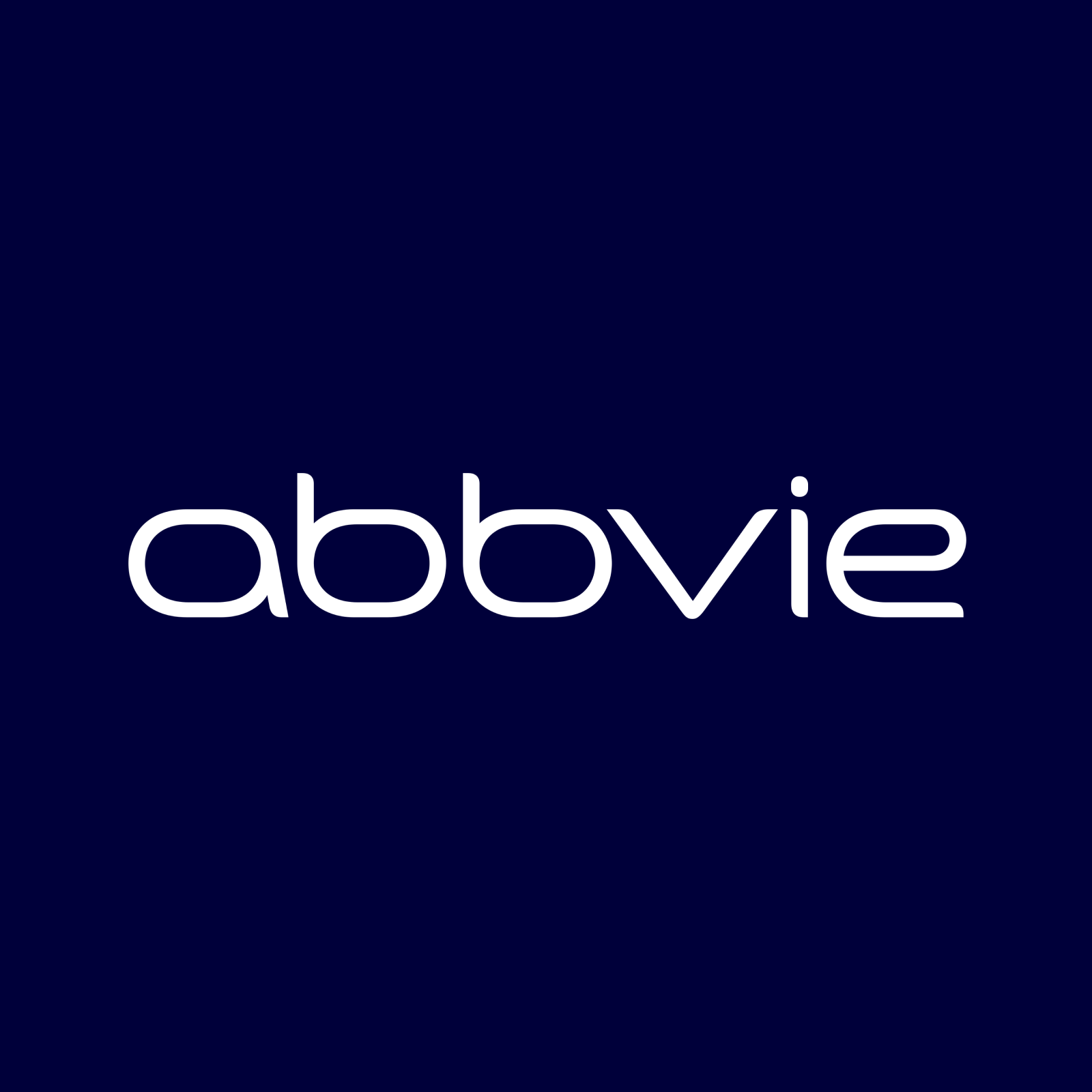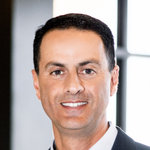
Abbvie Inc
NYSE:ABBV


| US |

|
Johnson & Johnson
NYSE:JNJ
|
Pharmaceuticals
|
| US |

|
Berkshire Hathaway Inc
NYSE:BRK.A
|
Financial Services
|
| US |

|
Bank of America Corp
NYSE:BAC
|
Banking
|
| US |

|
Mastercard Inc
NYSE:MA
|
Technology
|
| US |

|
UnitedHealth Group Inc
NYSE:UNH
|
Health Care
|
| US |

|
Exxon Mobil Corp
NYSE:XOM
|
Energy
|
| US |

|
Pfizer Inc
NYSE:PFE
|
Pharmaceuticals
|
| US |

|
Palantir Technologies Inc
NYSE:PLTR
|
Technology
|
| US |

|
Nike Inc
NYSE:NKE
|
Textiles, Apparel & Luxury Goods
|
| US |

|
Visa Inc
NYSE:V
|
Technology
|
| CN |

|
Alibaba Group Holding Ltd
NYSE:BABA
|
Retail
|
| US |

|
JPMorgan Chase & Co
NYSE:JPM
|
Banking
|
| US |

|
Coca-Cola Co
NYSE:KO
|
Beverages
|
| US |

|
Walmart Inc
NYSE:WMT
|
Retail
|
| US |

|
Verizon Communications Inc
NYSE:VZ
|
Telecommunication
|
| US |

|
Chevron Corp
NYSE:CVX
|
Energy
|
Utilize notes to systematically review your investment decisions. By reflecting on past outcomes, you can discern effective strategies and identify those that underperformed. This continuous feedback loop enables you to adapt and refine your approach, optimizing for future success.
Each note serves as a learning point, offering insights into your decision-making processes. Over time, you'll accumulate a personalized database of knowledge, enhancing your ability to make informed decisions quickly and effectively.
With a comprehensive record of your investment history at your fingertips, you can compare current opportunities against past experiences. This not only bolsters your confidence but also ensures that each decision is grounded in a well-documented rationale.
Do you really want to delete this note?
This action cannot be undone.

| 52 Week Range |
169.2
244.38
|
| Price Target |
|
We'll email you a reminder when the closing price reaches USD.
Choose the stock you wish to monitor with a price alert.

|
Johnson & Johnson
NYSE:JNJ
|
US |

|
Berkshire Hathaway Inc
NYSE:BRK.A
|
US |

|
Bank of America Corp
NYSE:BAC
|
US |

|
Mastercard Inc
NYSE:MA
|
US |

|
UnitedHealth Group Inc
NYSE:UNH
|
US |

|
Exxon Mobil Corp
NYSE:XOM
|
US |

|
Pfizer Inc
NYSE:PFE
|
US |

|
Palantir Technologies Inc
NYSE:PLTR
|
US |

|
Nike Inc
NYSE:NKE
|
US |

|
Visa Inc
NYSE:V
|
US |

|
Alibaba Group Holding Ltd
NYSE:BABA
|
CN |

|
JPMorgan Chase & Co
NYSE:JPM
|
US |

|
Coca-Cola Co
NYSE:KO
|
US |

|
Walmart Inc
NYSE:WMT
|
US |

|
Verizon Communications Inc
NYSE:VZ
|
US |

|
Chevron Corp
NYSE:CVX
|
US |
This alert will be permanently deleted.
Abbvie Inc





AbbVie Inc., a leader in the pharmaceutical industry, emerged from its parent company Abbott Laboratories in 2013, with a mission centered around addressing some of the world’s most complex and serious diseases. At its core, AbbVie is a research-driven entity that leverages scientific innovation to develop advanced therapies. With a robust pipeline, the company focuses on key therapeutic areas like immunology, oncology, neuroscience, eye care, virology, and women's health. It has developed a diversified portfolio designed to tackle challenging health issues. The company devotes significant resources to research and development, fostering a culture that celebrates scientific discovery as a pathway to improving patient lives worldwide.
Revenue generation for AbbVie is deeply intertwined with its treatment offerings, particularly its lineup of blockbuster drugs. The flagship product, Humira, an anti-inflammatory medication, has consistently stood as one of the top-selling drugs globally. Despite facing patent expirations for Humira, AbbVie has strategically navigated this challenge through its robust product pipeline, which includes promising medicines like Skyrizi and Rinvoq in immunology. The company also expanded its revenue potential significantly with the acquisition of Allergan in 2020, adding Botox and other products in aesthetics and eye care to its portfolio. The calculated diversification of revenue streams ensures AbbVie maintains a competitive edge, securing its position as a formidable player in the pharmaceutical industry.

AbbVie Inc., a leader in the pharmaceutical industry, emerged from its parent company Abbott Laboratories in 2013, with a mission centered around addressing some of the world’s most complex and serious diseases. At its core, AbbVie is a research-driven entity that leverages scientific innovation to develop advanced therapies. With a robust pipeline, the company focuses on key therapeutic areas like immunology, oncology, neuroscience, eye care, virology, and women's health. It has developed a diversified portfolio designed to tackle challenging health issues. The company devotes significant resources to research and development, fostering a culture that celebrates scientific discovery as a pathway to improving patient lives worldwide.
Revenue generation for AbbVie is deeply intertwined with its treatment offerings, particularly its lineup of blockbuster drugs. The flagship product, Humira, an anti-inflammatory medication, has consistently stood as one of the top-selling drugs globally. Despite facing patent expirations for Humira, AbbVie has strategically navigated this challenge through its robust product pipeline, which includes promising medicines like Skyrizi and Rinvoq in immunology. The company also expanded its revenue potential significantly with the acquisition of Allergan in 2020, adding Botox and other products in aesthetics and eye care to its portfolio. The calculated diversification of revenue streams ensures AbbVie maintains a competitive edge, securing its position as a formidable player in the pharmaceutical industry.
Revenue Beat: AbbVie reported Q3 net revenues of nearly $15.8 billion, growing in the high single digits and beating expectations by about $300 million.
EPS Outperformance: Adjusted earnings per share were $1.86, $0.10 above the midpoint of guidance.
Raised Guidance: Management raised its 2025 net revenue outlook to approximately $60.9 billion and its adjusted EPS guidance to $10.61–$10.65, both increases from prior forecasts.
Immunology Growth: Skyrizi and Rinvoq combined sales grew over 40%, with Skyrizi up 46% and Rinvoq up 34.1% operationally. Neuroscience revenue also saw double-digit growth.
Dividend Increase: AbbVie announced a 5.5% increase in its quarterly dividend, starting with the payment in February 2026.
Pipeline Progress: The company highlighted positive late-stage data for several drugs and expects key regulatory submissions and trial readouts over the next year.
HUMIRA Decline: HUMIRA sales dropped 55.7% due to biosimilar competition, but overall growth drivers are offsetting this decline.
Aesthetics Weakness: Aesthetics revenues fell 4.2%, as consumer sentiment and global market softness weighed on results.
Management

Richard A. Gonzalez is the Chairman and Chief Executive Officer of AbbVie Inc., a research-driven biopharmaceutical company. He has played a pivotal role in guiding AbbVie since its inception as a spin-off from Abbott Laboratories in 2013. Gonzalez has a long history with Abbott Laboratories, having held various leadership positions. He served as Abbott's Executive Vice President of the Pharmaceutical Products Group, where he was responsible for the company's global pharmaceuticals business. Gonzalez joined Abbott in 1977 and has a broad range of experience across several divisions within the company. His leadership at AbbVie has been marked by a strong focus on innovation and strategic acquisitions to enhance the company's product pipeline. Under his guidance, AbbVie has developed and marketed several key products, particularly in the areas of immunology and oncology. Gonzalez holds a strong commitment to addressing unmet medical needs and improving patient outcomes, solidifying AbbVie's position as a leading biopharmaceutical company globally. His leadership style emphasizes scientific excellence, patient-centered strategies, and fostering a strong company culture.

Gonzalez joined Abbott in 1977 and has a broad range of experience across several divisions within the company. His leadership at AbbVie has been marked by a strong focus on innovation and strategic acquisitions to enhance the company's product pipeline. Under his guidance, AbbVie has developed and marketed several key products, particularly in the areas of immunology and oncology.
Gonzalez holds a strong commitment to addressing unmet medical needs and improving patient outcomes, solidifying AbbVie's position as a leading biopharmaceutical company globally. His leadership style emphasizes scientific excellence, patient-centered strategies, and fostering a strong company culture.

Robert A. Michael is a notable executive at AbbVie Inc., a leading global biopharmaceutical company. As part of AbbVie’s leadership team, Michael has played a significant role in guiding the company's strategic, financial, and operational direction. Robert A. Michael has served as President and Vice Chairman of AbbVie, overseeing various critical aspects of the business. Before this, he was AbbVie's Chief Financial Officer, where he was responsible for the financial operations of the company, including financial planning, analysis, and investor relations. His leadership in financial strategy has been instrumental in supporting AbbVie's growth and innovation in the pharmaceutical sector. Before joining AbbVie, Robert Michael held multiple leadership roles within Abbott Laboratories, which AbbVie was spun off from in 2013. His extensive experience in the pharmaceutical industry and financial management has made him a key figure in AbbVie’s continued success and expansion in the global market. His academic background includes a degree in economics from the University of Michigan and an MBA from the University of Chicago, ensuring a strong foundation for his career in finance and executive management.

Robert A. Michael has served as President and Vice Chairman of AbbVie, overseeing various critical aspects of the business. Before this, he was AbbVie's Chief Financial Officer, where he was responsible for the financial operations of the company, including financial planning, analysis, and investor relations. His leadership in financial strategy has been instrumental in supporting AbbVie's growth and innovation in the pharmaceutical sector.
Before joining AbbVie, Robert Michael held multiple leadership roles within Abbott Laboratories, which AbbVie was spun off from in 2013. His extensive experience in the pharmaceutical industry and financial management has made him a key figure in AbbVie’s continued success and expansion in the global market.
His academic background includes a degree in economics from the University of Michigan and an MBA from the University of Chicago, ensuring a strong foundation for his career in finance and executive management.

Scott T. Reents currently serves as Senior Vice President, President of Financial Operations, and Chief Financial Officer at AbbVie Inc. In these roles, he is responsible for overseeing the global financial operations of the company, including treasury, tax, investor relations, and information technology. Reents brings a wealth of experience in financial management and strategic planning to his position, contributing to AbbVie's financial health and strategic growth. Before joining AbbVie, he held various leadership positions in finance at major pharmaceutical companies, where he honed his expertise in driving financial performance and developing innovative financial strategies. His leadership is key to AbbVie's ongoing success in the highly competitive biopharmaceutical industry.


Dr. Azita Saleki-Gerhardt is a notable figure in the pharmaceutical industry, currently serving as an executive at AbbVie Inc., where she plays a significant role in the company's operations. She joined Abbott, the precursor to AbbVie, in 1993 as a research scientist and has since held various leadership roles across pharmaceutical development and manufacturing. Dr. Saleki-Gerhardt earned her Bachelor of Science, Master of Science, and Ph.D. degrees in Pharmaceutics and Drug Delivery from the University of Wisconsin-Madison. Her extensive academic background in pharmaceutics has contributed to her influential career in pharmaceutical sciences and global manufacturing operations. At AbbVie, Dr. Saleki-Gerhardt has been integral in overseeing global supply chain operations, driving process improvements, and ensuring the effective supply of pharmaceutical products worldwide. She is recognized for her strategic insight and leadership in advancing AbbVie’s global manufacturing network, which includes plants in several countries around the world. Her work has been instrumental in enhancing efficiency and innovation in AbbVie's production processes. Furthermore, she is involved in various industry initiatives and associations, further highlighting her commitment to advancing the pharmaceutical sector.

Dr. Saleki-Gerhardt earned her Bachelor of Science, Master of Science, and Ph.D. degrees in Pharmaceutics and Drug Delivery from the University of Wisconsin-Madison. Her extensive academic background in pharmaceutics has contributed to her influential career in pharmaceutical sciences and global manufacturing operations.
At AbbVie, Dr. Saleki-Gerhardt has been integral in overseeing global supply chain operations, driving process improvements, and ensuring the effective supply of pharmaceutical products worldwide. She is recognized for her strategic insight and leadership in advancing AbbVie’s global manufacturing network, which includes plants in several countries around the world. Her work has been instrumental in enhancing efficiency and innovation in AbbVie's production processes. Furthermore, she is involved in various industry initiatives and associations, further highlighting her commitment to advancing the pharmaceutical sector.

Jeffrey Ryan Stewart currently serves as the Chief Commercial Officer at AbbVie Inc., a position he has held since his appointment in 2018. With a Bachelor of Science degree from the University of Southern California and a Master of Business Administration from the University of Pennsylvania's Wharton School, Stewart brings a robust educational background to his role. Before joining AbbVie, he had an extensive career at Abbott Laboratories in various leadership roles, contributing significantly to the company's commercial and strategic development initiatives. At AbbVie, Stewart is responsible for overseeing the company’s commercial operations globally, playing a crucial role in driving sales, marketing, and global market access strategies. His leadership is vital in ensuring that AbbVie’s therapeutic solutions reach patients worldwide, enhancing the company’s mission of addressing the world's pressing healthcare challenges.


Dr. Roopal Thakkar, M.D., serves as a prominent executive at AbbVie Inc., where he holds the position of Senior Vice President and Chief Medical Officer. He plays a crucial role in steering the company’s global medical and regulatory strategies. With a vast experience in the pharmaceutical industry, Dr. Thakkar is instrumental in overseeing clinical development and the advancement of the company's pipeline across various therapeutic areas. His leadership ensures that AbbVie's products meet rigorous standards for safety and efficacy, ultimately impacting patient care and treatment solutions globally. His expertise and strategic vision contribute significantly to AbbVie’s mission of developing innovative healthcare solutions.


Elizabeth Shea serves as the Vice President and Corporate Secretary at AbbVie Inc., a global biopharmaceutical company. In her role, she is integral to AbbVie's governance, providing advice and support to the company's Board of Directors and senior management. With a robust legal background, Shea oversees compliance with corporate governance standards and manages the documentation of board activities, ensuring transparency and adherence to legal and regulatory requirements. She plays a key role in shareholder relations, contributing to AbbVie's commitment to ethical business practices and strategic growth. Her expertise is vital in navigating the complex landscape of the pharmaceutical industry.


Perry C. Siatis is a notable executive with extensive legal expertise who has held significant roles at AbbVie Inc., a global biopharmaceutical company. He serves as the Executive Vice President, General Counsel, and Secretary at AbbVie. Siatis is responsible for overseeing the company’s global legal activities, providing strategic guidance on legal matters, regulatory issues, and corporate governance. Before joining AbbVie, Perry C. Siatis gained significant experience at Abbott Laboratories, where he had been part of the legal team, contributing to various roles that involved corporate legal affairs, litigation, and compliance. His legal acumen and strategic insight have been critical in navigating the complex regulatory environment of the pharmaceutical industry. Siatis holds a juris doctor degree and has a strong foundation in legal and compliance matters, which has been instrumental in his leadership at AbbVie. His contributions to AbbVie have been significant in supporting the company’s strategic goals, ensuring legal compliance, and safeguarding its interests as it pursues innovative medical solutions.

Before joining AbbVie, Perry C. Siatis gained significant experience at Abbott Laboratories, where he had been part of the legal team, contributing to various roles that involved corporate legal affairs, litigation, and compliance. His legal acumen and strategic insight have been critical in navigating the complex regulatory environment of the pharmaceutical industry. Siatis holds a juris doctor degree and has a strong foundation in legal and compliance matters, which has been instrumental in his leadership at AbbVie.
His contributions to AbbVie have been significant in supporting the company’s strategic goals, ensuring legal compliance, and safeguarding its interests as it pursues innovative medical solutions.


Timothy J. Richmond is recognized for his role as Executive Vice President and Chief Human Resources Officer at AbbVie Inc., a leading global biopharmaceutical company. Richmond has been instrumental in shaping the company's human resources strategies, emphasizing talent development, organizational culture, and employee engagement. His leadership has focused on fostering an inclusive and dynamic work environment that aligns with AbbVie's mission to address the world's critical health challenges. Richmond joined AbbVie at its inception in 2013, following its separation from Abbott Laboratories, where he also held various senior HR roles. His extensive experience in human resources has been pivotal in supporting the company's rapid growth and global operations. Under his guidance, AbbVie has been recognized for its workplace culture and commitment to diversity and inclusion. With a strong educational background, including a degree in political science and an MBA, Richmond applies a strategic approach to human resources, ensuring that the company's people strategies effectively support its business objectives. His contributions have been vital in maintaining AbbVie's status as an employer of choice in the competitive pharmaceutical industry.

Richmond joined AbbVie at its inception in 2013, following its separation from Abbott Laboratories, where he also held various senior HR roles. His extensive experience in human resources has been pivotal in supporting the company's rapid growth and global operations. Under his guidance, AbbVie has been recognized for its workplace culture and commitment to diversity and inclusion.
With a strong educational background, including a degree in political science and an MBA, Richmond applies a strategic approach to human resources, ensuring that the company's people strategies effectively support its business objectives. His contributions have been vital in maintaining AbbVie's status as an employer of choice in the competitive pharmaceutical industry.






























